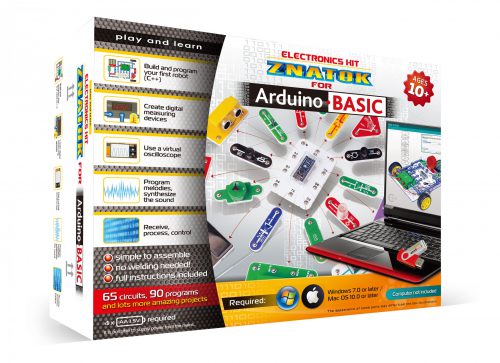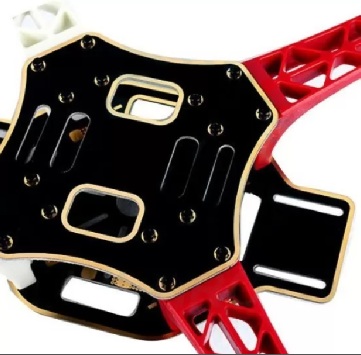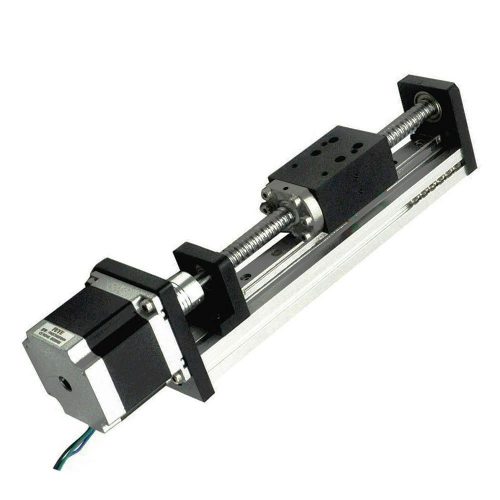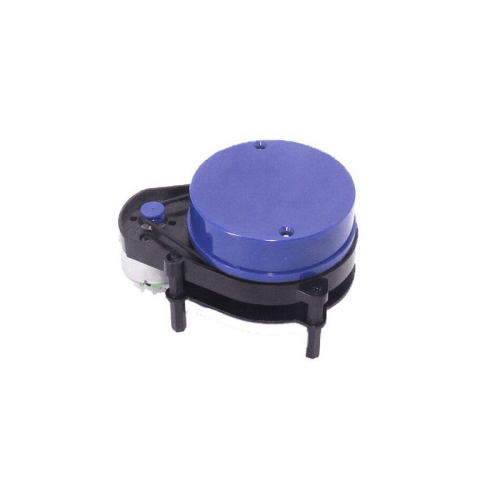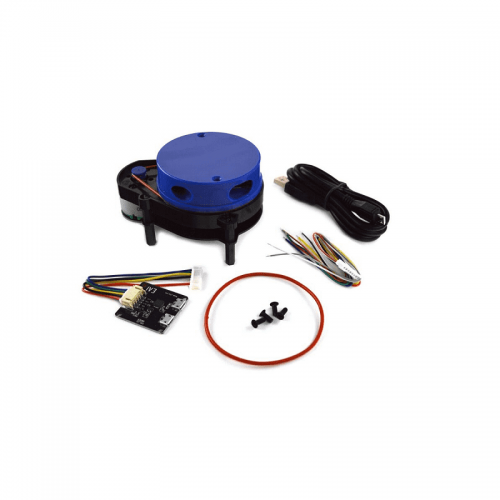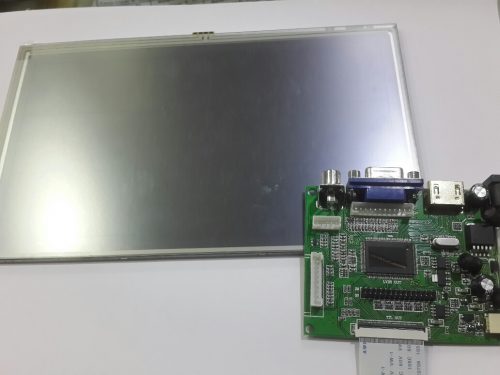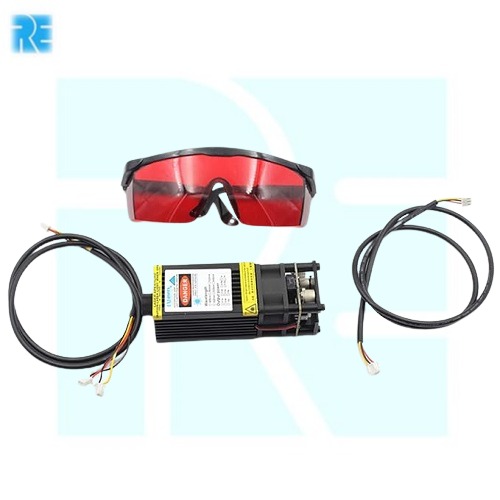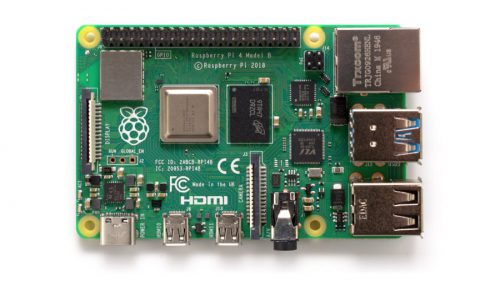1. STM32F103RCT6: the high performance STM32 MCU in LQFP64 package which features
* Core: ARM Cortex-M3 32-bit RISC;
* Operating Frequency: 72MHz, 1.25 DMIPS/MHz;
* I/Os: 51;
* Operating Voltage: 2-3.6V;
* Memories: 256kB Flash, 48kB RAM;
* Communication Interfaces: 2 x SPI, 5 x USART, 2 x I2S, 2 x I2C, 1 x SDIO, 1 x USB, 1 x CAN;
* AD & DA converters: 3 x AD(12-bit, 1s, shares 16 channels); 2 x DA(12-bit);
* Debugging/Programming: supports JTAG/SWD (serial wire debug) interfaces, supports IAP;
2. AMS1117-3.3V: 3.3V voltage regulator;
3. Power supply switch: 5V DC or USB;
4. Power indicator;
5. LEDs: Convenient for indicating I/O status or program debugging running state;
6. Reset button;
7. User key;
8. Joystick: Convenient for I/O input (five positions);
9. 32.768K crystal oscillator: used for internal RTC, also supports clock calibration;
10. 8M crystal oscillator: enables the MCU run at 72M frequency by frequency multiplication;
11. SDIO Interface: connects to the Micro SD adapter easily, It is much faster to read/write the Micro SD card via SDIO than via SPI;
12. 8-Bit I/O Interface: easily connects to keypad, motor, etc;
13. CAN Interface: communicates with accessory boards which feature the CAN device conveniently;
14. SPI1 / SPI2 interface:
* Easily connects to SPI peripherals such as FLASH (AT45DBxx), SD card, MP3, etc.;
* Convenient for connecting AD, DA module, thanks to the SPI1 alternative function - AD&DA;
15. I2C1 / I2C2 interface: easily connects to I2C peripherals such as I/O expander (PCF8574), EEPROM (AT24Cxx), etc.;
16. LCD Interface: easily connects to the touch screen LCD;
17. ONE-WIRE Interface: easily connects to ONE-WIRE devices (TO-92 package), such as temperature sensor (DS18B20), electronic registration number (DS2401), etc.
18. PS/2 Interface: easily connects to PS/2 keyboard or mouse;
19. USART1 Interface: easily connects to RS232, RS485, USB TO 232;
20. USART2 Interface: easily connects to RS232, RS485, USB TO 232;
21. USB Port: USB communication between board and PC;
22. 5V DC jack;
23. 5V/3.3 V power input/output: usually used for power output, or common ground with other user board;
24. MCU pins connector: all the MCU pins are accessible on expansion connectors for further expansion;
25. JTAG/SWD interface: for debugging/programming;
26. Boot Mode Selection: for configuring the BOOT0 and BOOT1 pins.
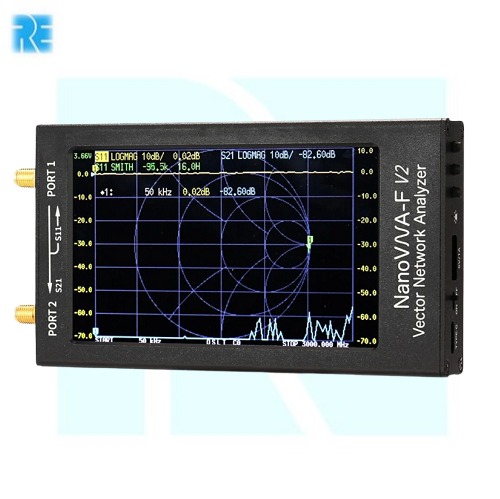
 NanoVNA-F V2 50kHz-3GHz IPS 4.3Inch LCD Display Vector Network Analyzer S-A-A-2 Antenna Analyzer Sho E-880 Measurement frequency: 50KHz -3GHz Display: 4.3inch, Resolution 800*480 Battery: 5000mAh Li-ion Battery RF output power: -9dBm (error within 1GHz: ±1dB) Frequency accuracy: <0.5ppm S21 dynamic range: 70dB (1.5GHz), 60dB (3GHz) S11 dynamic range: 50dB (1.5GHz), 40dB (3GHz) 2-port return loss: 20dB typ (1.5GHz), 13dB min (3GHz) Number of calibration points: 101 points Number of scanning points: 101 points Number of traces: 4 Number of mark points: 4 (the mark point bar can be moved up and down on the screen) Setting save: 5 groups (after saving, it can be directly recalled when it is used next time, no need to recalibrate, and the saved parameters before the last shutdown will be automatically recalled when it is turned on next time) Support calibration result interpolation, can measure without recalibration after adjusting the measurement frequency band Scan time: about 1.9s/1 time (50kHz ~ 3000MHz full frequency band)
NanoVNA-F V2 50kHz-3GHz IPS 4.3Inch LCD Display Vector Network Analyzer S-A-A-2 Antenna Analyzer Sho E-880 Measurement frequency: 50KHz -3GHz Display: 4.3inch, Resolution 800*480 Battery: 5000mAh Li-ion Battery RF output power: -9dBm (error within 1GHz: ±1dB) Frequency accuracy: <0.5ppm S21 dynamic range: 70dB (1.5GHz), 60dB (3GHz) S11 dynamic range: 50dB (1.5GHz), 40dB (3GHz) 2-port return loss: 20dB typ (1.5GHz), 13dB min (3GHz) Number of calibration points: 101 points Number of scanning points: 101 points Number of traces: 4 Number of mark points: 4 (the mark point bar can be moved up and down on the screen) Setting save: 5 groups (after saving, it can be directly recalled when it is used next time, no need to recalibrate, and the saved parameters before the last shutdown will be automatically recalled when it is turned on next time) Support calibration result interpolation, can measure without recalibration after adjusting the measurement frequency band Scan time: about 1.9s/1 time (50kHz ~ 3000MHz full frequency band)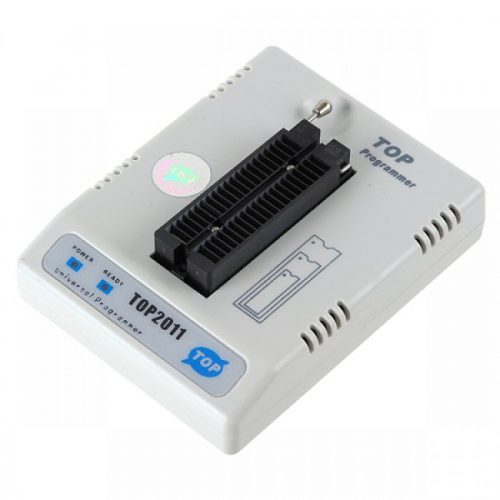 Description TOP2011 USB Universal Programmer 100% is original one,Top2011 Eprom Programmer Supports Windows 98se/ME/2000/XP/Vista/Win7,TOP 2011 Universal Programmer is the best chip universal programmer TOP2011 USB Universal Programmer Features USB powered, 70mA~500mA, No AC/DC adapter needed. Support 2.5V~6.5V device. Over-current protection on all Pins. 40 pins self-lock sockets. Working with Windows XP/Vista/Win7(32-bit). Self-detecting the device’s manufacturer’s name and the type of IC. Topwin 2011 EEPROM programmer speciality 100% Brand New Model : TOP2011 40 pins self-lock sockets USB load testing (0 to 10 levels) Interface with PC , laptop or compatibles through USB1.1/2.0 port Self-detecting the device’s manufacturer’s name and the type of IC Provides over-current and over-voltage protection for safety of the chip and programmer hardware Support devices 2.5V~6.5V Power : < 2.5w (5v/500mA) Supports Windows 98/SE/ME/2000/XP/Vista/Win7
Description TOP2011 USB Universal Programmer 100% is original one,Top2011 Eprom Programmer Supports Windows 98se/ME/2000/XP/Vista/Win7,TOP 2011 Universal Programmer is the best chip universal programmer TOP2011 USB Universal Programmer Features USB powered, 70mA~500mA, No AC/DC adapter needed. Support 2.5V~6.5V device. Over-current protection on all Pins. 40 pins self-lock sockets. Working with Windows XP/Vista/Win7(32-bit). Self-detecting the device’s manufacturer’s name and the type of IC. Topwin 2011 EEPROM programmer speciality 100% Brand New Model : TOP2011 40 pins self-lock sockets USB load testing (0 to 10 levels) Interface with PC , laptop or compatibles through USB1.1/2.0 port Self-detecting the device’s manufacturer’s name and the type of IC Provides over-current and over-voltage protection for safety of the chip and programmer hardware Support devices 2.5V~6.5V Power : < 2.5w (5v/500mA) Supports Windows 98/SE/ME/2000/XP/Vista/Win7 1. STM32F103RCT6: the high performance STM32 MCU in LQFP64 package which features * Core: ARM Cortex-M3 32-bit RISC; * Operating Frequency: 72MHz, 1.25 DMIPS/MHz; * I/Os: 51; * Operating Voltage: 2-3.6V; * Memories: 256kB Flash, 48kB RAM; * Communication Interfaces: 2 x SPI, 5 x USART, 2 x I2S, 2 x I2C, 1 x SDIO, 1 x USB, 1 x CAN; * AD & DA converters: 3 x AD(12-bit, 1s, shares 16 channels); 2 x DA(12-bit); * Debugging/Programming: supports JTAG/SWD (serial wire debug) interfaces, supports IAP; 2. AMS1117-3.3V: 3.3V voltage regulator; 3. Power supply switch: 5V DC or USB; 4. Power indicator; 5. LEDs: Convenient for indicating I/O status or program debugging running state; 6. Reset button; 7. User key; 8. Joystick: Convenient for I/O input (five positions); 9. 32.768K crystal oscillator: used for internal RTC, also supports clock calibration; 10. 8M crystal oscillator: enables the MCU run at 72M frequency by frequency multiplication; 11. SDIO Interface: connects to the Micro SD adapter easily, It is much faster to read/write the Micro SD card via SDIO than via SPI; 12. 8-Bit I/O Interface: easily connects to keypad, motor, etc; 13. CAN Interface: communicates with accessory boards which feature the CAN device conveniently; 14. SPI1 / SPI2 interface: * Easily connects to SPI peripherals such as FLASH (AT45DBxx), SD card, MP3, etc.; * Convenient for connecting AD, DA module, thanks to the SPI1 alternative function - AD&DA; 15. I2C1 / I2C2 interface: easily connects to I2C peripherals such as I/O expander (PCF8574), EEPROM (AT24Cxx), etc.; 16. LCD Interface: easily connects to the touch screen LCD; 17. ONE-WIRE Interface: easily connects to ONE-WIRE devices (TO-92 package), such as temperature sensor (DS18B20), electronic registration number (DS2401), etc. 18. PS/2 Interface: easily connects to PS/2 keyboard or mouse; 19. USART1 Interface: easily connects to RS232, RS485, USB TO 232; 20. USART2 Interface: easily connects to RS232, RS485, USB TO 232; 21. USB Port: USB communication between board and PC; 22. 5V DC jack; 23. 5V/3.3 V power input/output: usually used for power output, or common ground with other user board; 24. MCU pins connector: all the MCU pins are accessible on expansion connectors for further expansion; 25. JTAG/SWD interface: for debugging/programming; 26. Boot Mode Selection: for configuring the BOOT0 and BOOT1 pins.
1. STM32F103RCT6: the high performance STM32 MCU in LQFP64 package which features * Core: ARM Cortex-M3 32-bit RISC; * Operating Frequency: 72MHz, 1.25 DMIPS/MHz; * I/Os: 51; * Operating Voltage: 2-3.6V; * Memories: 256kB Flash, 48kB RAM; * Communication Interfaces: 2 x SPI, 5 x USART, 2 x I2S, 2 x I2C, 1 x SDIO, 1 x USB, 1 x CAN; * AD & DA converters: 3 x AD(12-bit, 1s, shares 16 channels); 2 x DA(12-bit); * Debugging/Programming: supports JTAG/SWD (serial wire debug) interfaces, supports IAP; 2. AMS1117-3.3V: 3.3V voltage regulator; 3. Power supply switch: 5V DC or USB; 4. Power indicator; 5. LEDs: Convenient for indicating I/O status or program debugging running state; 6. Reset button; 7. User key; 8. Joystick: Convenient for I/O input (five positions); 9. 32.768K crystal oscillator: used for internal RTC, also supports clock calibration; 10. 8M crystal oscillator: enables the MCU run at 72M frequency by frequency multiplication; 11. SDIO Interface: connects to the Micro SD adapter easily, It is much faster to read/write the Micro SD card via SDIO than via SPI; 12. 8-Bit I/O Interface: easily connects to keypad, motor, etc; 13. CAN Interface: communicates with accessory boards which feature the CAN device conveniently; 14. SPI1 / SPI2 interface: * Easily connects to SPI peripherals such as FLASH (AT45DBxx), SD card, MP3, etc.; * Convenient for connecting AD, DA module, thanks to the SPI1 alternative function - AD&DA; 15. I2C1 / I2C2 interface: easily connects to I2C peripherals such as I/O expander (PCF8574), EEPROM (AT24Cxx), etc.; 16. LCD Interface: easily connects to the touch screen LCD; 17. ONE-WIRE Interface: easily connects to ONE-WIRE devices (TO-92 package), such as temperature sensor (DS18B20), electronic registration number (DS2401), etc. 18. PS/2 Interface: easily connects to PS/2 keyboard or mouse; 19. USART1 Interface: easily connects to RS232, RS485, USB TO 232; 20. USART2 Interface: easily connects to RS232, RS485, USB TO 232; 21. USB Port: USB communication between board and PC; 22. 5V DC jack; 23. 5V/3.3 V power input/output: usually used for power output, or common ground with other user board; 24. MCU pins connector: all the MCU pins are accessible on expansion connectors for further expansion; 25. JTAG/SWD interface: for debugging/programming; 26. Boot Mode Selection: for configuring the BOOT0 and BOOT1 pins.
